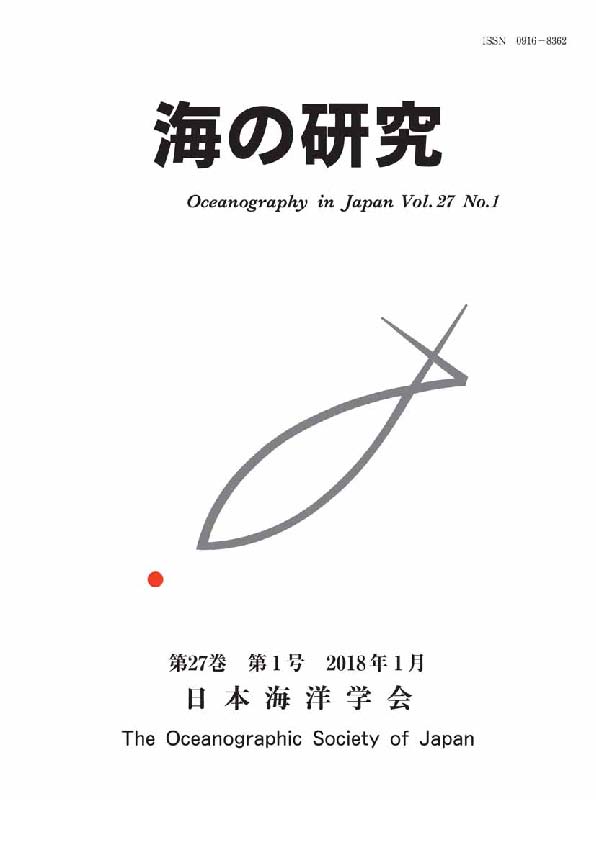
- Issue 1-2 Pages 1-
- |<
- <
- 1
- >
- >|
-
Takashi IjichiArticle type: review-article
2024 Volume 33 Issue 1-2 Pages 1-16
Published: March 15, 2024
Released on J-STAGE: March 15, 2024
JOURNAL FREE ACCESSThe global distribution of turbulent mixing in the deep ocean is essential for understanding the global overturning circulation. Currently, however, this requires reliance on a technique referred to as parameterization. This method aims to estimate the strength of turbulent mixing using large-scale observable physical quantities on a global scale. However, there are several problems with the existing turbulence parameterization methods. The parameterization of turbulent dissipation rates in the deep ocean relies on both fine-scale velocity shear and density strain information to measure the distortion of internal wave spectra. However, the application of the single-wave approximation to broadband internal wave spectra leads to overestimation of turbulent dissipation rates. In particular, in regions dominated by near-inertial gravity waves, where this approximation is effective, turbulent dissipation rates are overestimated. Furthermore, the determination of the turbulent mixing intensity from the estimated dissipation rate conventionally assumes an efficiency of approximately 20%, but this efficiency varies depending on the driving mechanisms and developmental stages of turbulent events. In particular, in areas where sporadic, intense turbulent events are induced by convective instability in high-density seawater overflow regions, the mixing efficiency can sharply increase to 50%. In this paper, the existing problems with turbulence parameterization are reviewed, and potential solutions are explored.
View full abstractDownload PDF (12609K) -
Development of an analytical method for trace metal isotopes and its application to marine chemistryShotaro TakanoArticle type: review-article
2024 Volume 33 Issue 1-2 Pages 17-30
Published: March 15, 2024
Released on J-STAGE: March 15, 2024
JOURNAL FREE ACCESSIn the ocean, trace metals, such as nickel, copper, and zinc, are present in concentrations on the order of pmol/kg~nmol/kg. These metals are essential nutrients and toxins for marine organisms. Herein, the sources and biogeochemical cycles of trace metals in the ocean are elucidated based on their isotope ratios. (i) An analytical method for determining the isotope ratios of dissolved nickel, copper, and zinc in seawater is developed. This method can be used to simultaneously analyze the isotope ratios of nickel, copper, and zinc in seawater, enabling the efficient observation of isotope ratio distributions of trace metals. (ii) The concentrations and isotopic distributions of dissolved copper in the Indian and Pacific Oceans are uncovered, providing insight into the biogeochemical cycle of copper in the oceans. (iii) The isotopic distributions of dissolved nickel, copper, and zinc in the East China Sea are determined, and the transport process of trace metals from the land to the surface layer of the East China Sea is elucidated. (iv) Moreover, particulate trace metals are analyzed. The isotope ratios of nickel and copper in sinking particles in the South China Sea are investigated to potentially determine the sources of these particulate trace metals.
View full abstractDownload PDF (4791K)
- |<
- <
- 1
- >
- >|